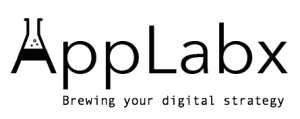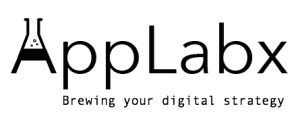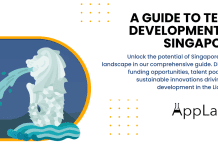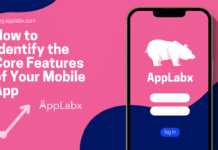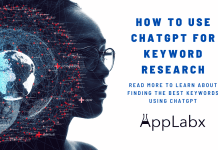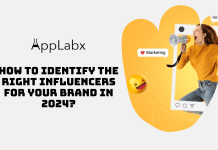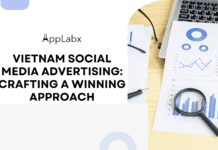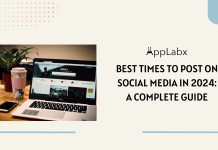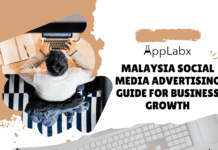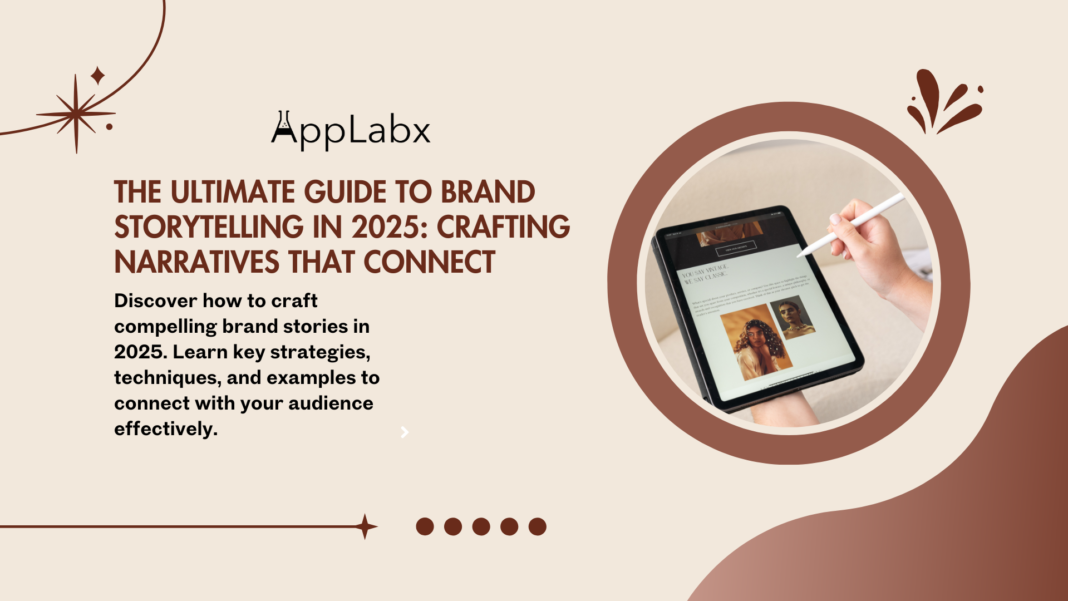Key Takeaways
In 2025, effective brand storytelling requires deep audience understanding and tailored narratives that resonate emotionally.
Leveraging technology, like AR and AI, enhances engagement by creating personalized and immersive brand experiences.
Consistency and authenticity are crucial for building trust, making your brand story more relatable and impactful across platforms.
In 2025, the world of marketing is more competitive than ever.
With countless brands vying for attention, consumers are growing increasingly selective about where they invest their time, attention, and money. In this crowded digital landscape, it’s no longer enough to simply advertise products or services.
Brands must go beyond transactional messaging to form deeper, more meaningful connections with their audiences. One of the most powerful ways to achieve this is through brand storytelling.
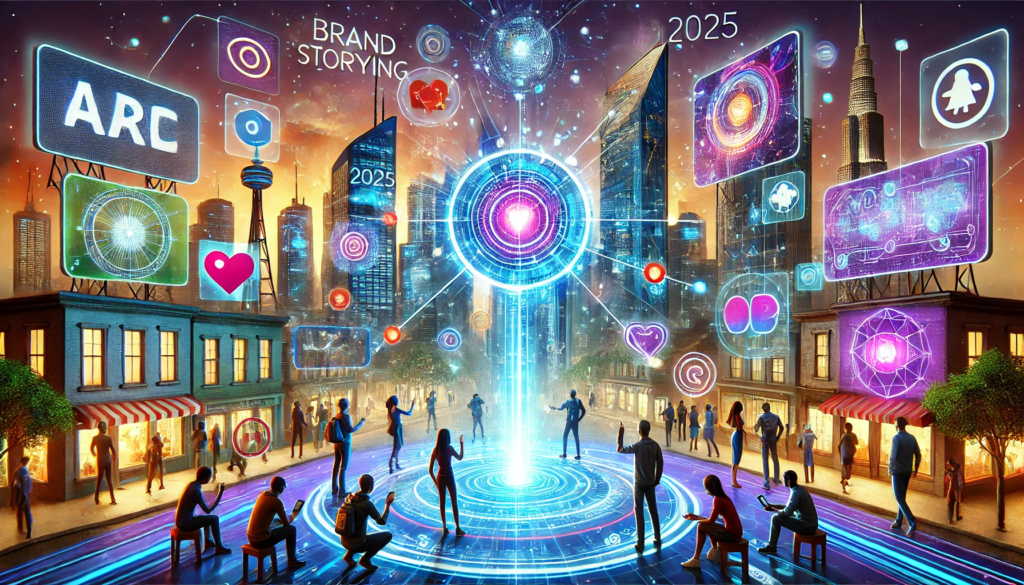
Brand storytelling is the art of crafting compelling, emotionally-driven narratives that resonate with your target audience, build trust, and establish a long-lasting relationship. While storytelling has always been a fundamental part of human communication, the way it’s leveraged in marketing has evolved dramatically. As consumers become more discerning, they are no longer satisfied with generic advertisements or overt sales pitches. Instead, they are looking for stories that speak to their values, emotions, and experiences. In 2025, effective brand storytelling requires an understanding of consumer psychology, a commitment to authenticity, and the ability to use new technologies to create immersive, engaging narratives.
In a world where consumers are constantly bombarded with content from every direction, it’s crucial for brands to find a way to cut through the noise. This is where storytelling can make a significant impact. When done right, brand stories can evoke emotions, spark conversations, and create loyal customers who feel personally connected to the brand. Whether through a captivating video, an engaging social media post, or a well-crafted blog, storytelling helps humanize a brand and transform it from a faceless entity into something relatable and trustworthy.
As we move further into 2025, the role of storytelling in brand marketing continues to grow. With advancements in artificial intelligence, augmented reality, and other innovative technologies, the way stories are told is evolving, offering brands new ways to engage their audience. However, despite these technological advances, the core principles of storytelling remain unchanged. Brands still need to understand their audience, craft narratives that speak to their desires and pain points, and communicate with authenticity and clarity.
This guide will explore how brands can effectively harness the power of storytelling in 2025. We’ll look at the fundamental elements of a successful brand story, how to connect emotionally with your audience, and the different forms of storytelling that are gaining traction in the modern marketing landscape. We’ll also discuss how to measure the impact of your brand story and avoid common pitfalls that can derail your efforts. Whether you’re a small startup or an established enterprise, mastering the art of brand storytelling will be crucial to your success in 2025 and beyond.
So, if you’re ready to take your brand to the next level and craft narratives that truly resonate with your audience, keep reading. This ultimate guide to brand storytelling in 2025 will provide you with all the tools, strategies, and insights you need to tell your brand’s story in a way that connects, inspires, and drives lasting results.
The Ultimate Guide to Brand Storytelling in 2025: Crafting Narratives That Connect
- Why Brand Storytelling Matters in 2025
- Key Elements of Effective Brand Storytelling
- Understanding Your Audience to Craft a Powerful Narrative
- Different Forms of Brand Storytelling
- Crafting a Brand Story That Stands Out
- Leveraging Technology and Innovation in Brand Storytelling
- Measuring the Impact of Your Brand Story
- Common Brand Storytelling Mistakes to Avoid
1. Why Brand Storytelling Matters in 2025
As we enter 2025, the landscape of marketing continues to evolve rapidly. Amidst the ever-growing digital noise and an oversaturated market, consumers are more discerning than ever before. In this environment, traditional advertising methods, such as direct sales pitches or banner ads, are becoming increasingly ineffective. Instead, consumers are seeking out brands that resonate with them on a deeper, more emotional level. This is where brand storytelling comes into play. Here’s why storytelling is more critical than ever in 2025.
Establishing Emotional Connections
- Consumers crave authentic connections: In 2025, people are not just looking for products or services—they are looking for brands they can connect with emotionally. A well-crafted story has the power to evoke emotions that drive consumer behavior. When brands tell stories that align with their audience’s values, needs, and aspirations, they foster loyalty and trust.
- The importance of relatability: A story that feels real, human, and authentic is more likely to resonate with audiences. By sharing relatable experiences, challenges, or triumphs, brands can position themselves as more than just businesses—they become part of the consumer’s personal journey.
- Examples:
- Nike: Known for its powerful storytelling, Nike’s campaigns such as “Just Do It” or “Dream Crazy” tap into the emotions of perseverance, passion, and triumph, which resonate deeply with their audience. Nike’s ability to tie their narrative to themes of empowerment has created long-lasting emotional connections with customers.
- Dove: Dove’s “Real Beauty” campaign is another example of how emotional storytelling can lead to a stronger bond with consumers. By focusing on body positivity and self-esteem, Dove connected with its audience by addressing deeply personal issues in a relatable and genuine way.
Building Trust and Authenticity
- Trust as a cornerstone of modern marketing: With the rise of misinformation and consumer skepticism, authenticity has become the currency of successful marketing. In 2025, consumers expect brands to be transparent, honest, and socially responsible. Storytelling offers an effective way to communicate these values to your audience.
- Authentic storytelling fosters credibility: By sharing the brand’s origin story, core values, and mission, companies can demonstrate who they truly are. This builds credibility and trust, which is essential in converting potential customers into loyal advocates.
- Examples:
- Patagonia: Patagonia’s brand story revolves around environmental sustainability, and they are transparent about their efforts to reduce their carbon footprint and support ethical production practices. By incorporating their mission into their storytelling, they not only differentiate themselves in the market but also cultivate trust with their environmentally conscious consumers.
- Toms Shoes: Toms is another example of a brand that effectively uses storytelling to build trust. Their “One for One” campaign tells the story of giving back, where every pair of shoes sold results in a pair being donated to someone in need. This narrative resonates deeply with consumers who value social responsibility.
Differentiating Your Brand in a Crowded Market
- Saturation of products and services: In today’s market, most industries are highly saturated, with numerous brands offering similar products or services. In such a crowded space, the most effective way to stand out is by telling a unique and compelling story that differentiates your brand from the competition.
- Creating a unique brand identity: Brand storytelling provides a platform to communicate the unique aspects of your brand, whether it’s your history, mission, or vision. A well-told story highlights what makes your brand different from others, ensuring that it remains memorable in the minds of consumers.
- Examples:
- Apple: Apple’s storytelling has long been centered around innovation and simplicity. Their narrative isn’t just about selling tech products; it’s about empowering individuals through creative, user-friendly technology. This focus on innovation and seamless design helps Apple stand out from other tech companies.
- Airbnb: Airbnb’s storytelling revolves around the idea of “belonging” and creating a sense of community, no matter where you are in the world. The story of sharing experiences in unique spaces helps differentiate them from traditional hotel chains and attracts customers looking for personalized, authentic travel experiences.
Engaging and Retaining Customers
- Storytelling as a tool for engagement: In 2025, the best way to capture consumer attention is not through traditional ads, but by telling stories that spark interest and engagement. Good storytelling doesn’t just inform—it encourages action. By weaving a narrative that engages your audience, you create opportunities for them to interact with your brand in a meaningful way.
- Building customer loyalty through narratives: Once engaged, consumers are more likely to return to brands that consistently tell stories they connect with. Brand stories that continue to evolve and develop over time keep the audience intrigued and invested in the brand’s journey.
- Examples:
- Coca-Cola: Coca-Cola has used storytelling to build a loyal following over the years with campaigns like “Share a Coke.” The brand taps into the power of personalization and connection, inviting customers to become part of the story by sharing a Coke with their name on it.
- Lego: Lego has maintained engagement by developing narratives around creativity, imagination, and play. The brand’s consistent storytelling through movies, video games, and partnerships allows customers to become part of the Lego universe, thus fostering long-term loyalty.
Adaptability in the Digital Age
- Storytelling in the age of technology: With the rapid evolution of digital platforms, storytelling has moved beyond traditional methods to include new, interactive, and personalized experiences. In 2025, it’s not enough for brands to simply tell a story; they must adapt it to new formats and channels that resonate with modern consumers.
- Multi-platform storytelling: Today’s audience engages with brands across a variety of devices and platforms, from social media to podcasts to AR experiences. Effective brand storytelling in 2025 means delivering a consistent narrative across all touchpoints while leveraging the unique features of each platform.
- Examples:
- Spotify: Through personalized playlists, podcasts, and branded content, Spotify uses storytelling to create a unique experience for each user. The brand connects with listeners on a personal level by curating content that aligns with their preferences and lifestyles.
- The New York Times: The New York Times has mastered interactive storytelling through digital platforms. They use multimedia, from video to immersive graphics, to tell complex stories in a way that’s engaging and informative. This type of storytelling appeals to the modern consumer, who seeks more than just text-based content.
Conclusion
In 2025, brand storytelling has become a critical tool for businesses looking to connect with consumers on a deeper, more emotional level. It’s no longer just about promoting a product—it’s about creating narratives that evoke emotion, build trust, and foster long-term relationships. As the digital landscape continues to evolve, the brands that will succeed are those that can craft stories that resonate with their audience, differentiate themselves in the market, and adapt to new technologies and consumer behaviors. Whether you’re aiming to build loyalty, drive engagement, or stand out in a crowded market, brand storytelling is the key to success in 2025 and beyond.
2. Key Elements of Effective Brand Storytelling
Brand storytelling is not just about telling a good story—it’s about telling the right story, one that resonates deeply with your target audience, aligns with your brand’s values, and stands out in an increasingly crowded marketplace. To craft an effective narrative that captures the hearts and minds of consumers, several key elements must come together. Below are the fundamental components of successful brand storytelling in 2025.
Emotional Connection
- Why emotion drives decision-making: In 2025, consumers are driven more by emotion than logic. Emotional connections lead to higher engagement, greater customer loyalty, and increased word-of-mouth recommendations. A powerful brand story taps into emotions like happiness, nostalgia, empathy, or even anger—drawing the audience into the narrative in a way that makes them feel personally connected to the brand.
- Eliciting emotions through authentic narratives: A story that feels real and relevant to the consumer’s life is far more likely to trigger a deep emotional response. Rather than focusing on product features or technical aspects, the most effective stories highlight the human experiences that your product or service can enhance.
- Examples:
- Always (The “Like a Girl” Campaign): Always used storytelling to address societal issues around gender stereotypes. By tackling the topic of confidence and challenging traditional ideas about femininity, they created an emotional connection with their audience that went far beyond selling sanitary products.
- John Lewis: Every year, John Lewis creates Christmas ads that tell emotionally charged stories. Their ads often depict themes of kindness, family, and giving. These ads resonate with the audience on a deeply emotional level, cementing John Lewis as a brand that cares about more than just selling products.
Consistency Across Platforms
- Unified messaging across channels: With multiple digital touchpoints—social media, websites, mobile apps, and physical stores—ensuring that your brand’s story is consistent across all platforms is essential. Whether a customer encounters your story on Instagram, your website, or through a TV ad, the message should remain consistent to avoid confusion and reinforce brand identity.
- Leveraging different platforms effectively: While the message should be the same, how you tell your story can vary depending on the platform. For example, Instagram may require more visual content, while a blog might allow for a deeper, more in-depth narrative. Adapting your story to fit the platform while maintaining consistency is crucial.
- Examples:
- Coca-Cola: Coca-Cola has maintained consistency in its brand message of happiness and sharing, whether through its traditional TV commercials, its social media posts, or its packaging. Their “Share a Coke” campaign, which personalized Coke bottles with names, reinforced this message of personal connection across all media.
- Netflix: Netflix consistently tells the story of diversity, empowerment, and entertainment for all through its platform. Whether promoting original series or interacting with followers on social media, Netflix’s brand story remains cohesive and tailored to the platform while staying true to its core narrative.
Relatability and Authenticity
- Humanizing the brand: Today’s consumers value authenticity more than ever. They want to feel that the brands they support are real, relatable, and human. Stories that feature authentic characters, real experiences, and relatable struggles are more likely to build trust and foster long-term loyalty.
- Being transparent and honest: Consumers appreciate when brands are transparent about their practices, values, and challenges. A story that openly acknowledges both successes and failures feels more genuine and trustworthy.
- Examples:
- Ben & Jerry’s: Known for its commitment to social justice, environmental causes, and ethical sourcing, Ben & Jerry’s brand story is authentic because it aligns with its actions. By consistently taking a stand on social issues, they show customers that they are not just a company selling ice cream—they are an organization driven by values.
- Warby Parker: Warby Parker’s brand story revolves around the idea of offering affordable, stylish eyewear while also promoting social responsibility. Their “Buy a Pair, Give a Pair” initiative has been a key part of their authentic narrative, showing consumers that the company cares about making a positive impact.
Human-Centric Approach
- Focusing on people, not just products: In 2025, brand storytelling must center around human experiences rather than just focusing on a product or service. A human-centric story puts the consumer or real-life characters at the heart of the narrative, showing how the brand or product enriches their lives or solves their problems.
- Creating relatable characters and situations: Consumers connect with characters, whether human or otherwise, that they can see themselves in. By creating personas or characters that reflect the values, needs, and desires of your audience, you build a story that feels more relatable and meaningful.
- Examples:
- Airbnb: Airbnb’s stories are often centered around real hosts and travelers. By focusing on personal experiences and the connections made through its platform, Airbnb emphasizes human connection, community, and belonging—values that resonate strongly with their audience.
- Apple: Apple’s storytelling focuses not just on its products but on how those products empower people to do more, create more, and express themselves. Ads like “Shot on iPhone” show real people using iPhones to capture meaningful moments, reinforcing the brand’s human-centric narrative.
Visual and Sensory Storytelling
- The power of visuals in storytelling: In 2025, visual content is paramount. Humans are visual creatures, and incorporating striking images, videos, or animations can bring a brand story to life in a way that words alone cannot. From social media posts to website design, visuals are an integral part of brand storytelling.
- Sensory experiences through video, audio, and interactivity: As technology advances, brands can offer multisensory experiences, combining visuals, sound, and even touch (in digital experiences) to enhance the storytelling experience. Interactive elements such as quizzes, polls, or virtual reality experiences can immerse customers in the story in new and engaging ways.
- Examples:
- Gucci: Gucci has embraced visual storytelling through its distinctive and often bold aesthetic. Their marketing campaigns and product design reflect an artful blend of high fashion and creative storytelling, engaging their audience with a visual narrative that aligns with their brand identity.
- Red Bull: Red Bull’s visual storytelling extends beyond traditional marketing and includes action-packed events and extreme sports. Their media company produces visually stunning videos of athletes and adventurers pushing the limits, which aligns with the brand’s high-energy, daring persona.
Innovation and Use of Technology
- Adapting to technological advancements: Brand storytelling in 2025 goes beyond traditional methods. With the rise of technologies like augmented reality (AR), virtual reality (VR), artificial intelligence (AI), and personalized marketing, brands can create highly immersive and customized experiences for their audiences.
- Creating interactive and personalized experiences: Consumers expect more personalized and interactive storytelling in the digital age. Brands that can incorporate these elements into their storytelling will be able to offer a more engaging, memorable experience that is tailored to individual preferences.
- Examples:
- IKEA: IKEA has embraced augmented reality through its IKEA Place app, which allows customers to see how furniture will look in their own homes before purchasing. This innovative approach to storytelling allows the customer to engage with the brand in a way that feels highly personalized and immersive.
- Nike Training Club (NTC) App: Nike’s NTC app is an example of a brand integrating storytelling with technology. The app features a mix of fitness coaching, inspirational stories, and personal goals, encouraging users to connect with the brand not just on a product level, but through an ongoing personal fitness journey.
Conclusion
The key elements of effective brand storytelling in 2025 revolve around emotional engagement, authenticity, consistency, and the ability to adapt to new technologies. In an age where consumers are inundated with content, a strong, well-crafted story has the power to break through the noise and create meaningful connections. By focusing on emotional resonance, relatability, human-centered narratives, and leveraging the power of technology, brands can create compelling stories that not only attract attention but also build lasting loyalty. With these elements in mind, your brand can craft a story that truly connects with your audience, fostering both engagement and long-term success.
3. Understanding Your Audience to Craft a Powerful Narrative
In 2025, brand storytelling is no longer a one-size-fits-all strategy. In order to create a narrative that truly resonates, brands must first and foremost understand their audience deeply. The most compelling stories are the ones that reflect the needs, desires, and pain points of the people they are speaking to. A powerful brand narrative isn’t just about what the company wants to say; it’s about what the audience wants to hear, how they want to feel, and what they need from the brand. Understanding your audience is the foundation of any successful storytelling strategy.
Identifying Your Target Audience
- Define your audience segments: In 2025, one of the most important steps in crafting a powerful narrative is understanding who you are speaking to. Rather than addressing a broad, generalized group, brands need to define specific audience segments. This could be based on factors like demographics, interests, behaviors, and psychographics.
- Use data to refine your segments: Data-driven insights are crucial in defining audience segments more precisely. With the help of analytics tools, customer surveys, and social listening platforms, brands can collect valuable data that helps identify patterns in consumer behavior, preferences, and content consumption habits.
- Examples:
- Spotify: Spotify segments its audience based on listening habits, lifestyle preferences, and even mood. For example, their “Spotify Wrapped” campaign delivers personalized music summaries, appealing to the unique tastes of each user. This segmentation allows Spotify to craft tailored narratives for different audience groups, keeping users engaged year-round.
- Nike: Nike uses data to segment its audience into different types of athletes, from professional runners to casual gym-goers. Each audience segment receives content that speaks directly to their level of engagement and fitness goals, ensuring the message is relevant and impactful.
Understanding Consumer Needs and Pain Points
- Listen to your audience: To craft an authentic and relatable story, brands must first listen to their audience. This means actively seeking feedback, conducting market research, and staying attuned to industry trends. Understanding the needs and pain points of your target audience allows you to create a story that addresses these concerns and offers solutions.
- Address emotional and functional needs: Consumers are looking for more than just functional solutions—they also want emotional fulfillment. A strong brand narrative should address both functional and emotional needs. Functional needs are the practical benefits a product or service provides, while emotional needs revolve around how a product or service makes the consumer feel.
- Examples:
- Tesla: Tesla addresses both functional and emotional needs in its brand narrative. Functionally, Tesla offers cutting-edge electric vehicles, but emotionally, it taps into the consumer’s desire for sustainability, innovation, and a cleaner future. By aligning with environmental values, Tesla’s narrative connects deeply with its audience.
- Warby Parker: Warby Parker meets a functional need by offering affordable, stylish eyewear. However, their brand story also addresses an emotional need, tapping into the desire for social good by donating a pair of glasses for every one sold. This dual focus makes their story compelling on both an emotional and practical level.
Crafting Personas to Guide Your Narrative
- Create detailed buyer personas: A persona is a detailed representation of a brand’s ideal customer based on data, research, and insights. By creating personas, brands can craft stories that feel more personalized and specific. These personas should encompass not just demographic details, but also emotional drivers, values, and behavioral patterns.
- Consider psychographics and lifestyle: Beyond demographics, psychographics—such as values, beliefs, lifestyle, and interests—are key to creating more relatable and meaningful brand stories. For instance, a brand targeting eco-conscious consumers may focus on themes of sustainability and social responsibility in its storytelling.
- Examples:
- Apple: Apple’s persona of an innovative, creative individual is consistent across all its brand storytelling efforts. Whether targeting professional designers with its MacBook line or everyday consumers with the iPhone, Apple’s brand narrative focuses on creativity, simplicity, and empowerment, aligning perfectly with the personas they have crafted.
- REI: REI appeals to outdoor enthusiasts who value adventure, sustainability, and community. Their brand story, centered around outdoor exploration and environmental responsibility, deeply connects with their persona of passionate nature lovers and outdoor adventurers.
Analyzing Audience Behavior and Preferences
- Leverage data analytics tools: Data tools like Google Analytics, social media insights, and customer behavior platforms are invaluable in understanding what type of content resonates with your audience. By analyzing which blog posts, videos, or social media posts are most engaging, brands can fine-tune their storytelling approach.
- Look for content consumption patterns: How does your audience consume content? Do they prefer short, snappy posts, or are they more engaged with long-form content such as blogs and videos? Understanding these preferences will guide how you craft your stories and determine the platforms you should focus on.
- Examples:
- BuzzFeed: BuzzFeed has mastered the art of creating content tailored to its audience’s preferences. By analyzing the behaviors of its readers, BuzzFeed crafts shareable, bite-sized content that plays to the emotional triggers of its audience, ensuring maximum engagement.
- Glossier: Glossier has built a brand narrative around its community of beauty enthusiasts. Through social media engagement and customer feedback, the brand has created a content strategy that mirrors the interests and needs of its audience, focusing heavily on customer reviews and user-generated content.
Aligning Your Brand Values with Audience Values
- Understand the values that drive your audience: In 2025, consumers are not just purchasing products—they are buying into a brand’s values. Understanding what matters most to your audience—whether it’s sustainability, inclusivity, social justice, or innovation—allows you to craft a narrative that aligns with these values.
- Communicate your brand’s core values effectively: Once you’ve identified the values your audience cares about, it’s important to weave those values into your brand story. Authenticity is key here—your values should not just be buzzwords, but principles that are reflected in your brand’s actions and messaging.
- Examples:
- Patagonia: Patagonia has built its entire brand around environmental activism, resonating with an audience that deeply values sustainability. Their brand storytelling consistently highlights their commitment to the environment, whether through product innovations or activism, which aligns perfectly with the values of their eco-conscious audience.
- Ben & Jerry’s: Ben & Jerry’s has long used its platform to advocate for social justice, aligning with the values of consumers who care about racial equality, climate change, and other social issues. By embedding these causes into their brand story, Ben & Jerry’s strengthens its connection with consumers who share these values.
Using Feedback and Insights for Continuous Improvement
- Iterate your brand narrative based on feedback: Consumer preferences and needs can evolve over time, and so should your brand story. By continuously gathering feedback through surveys, customer reviews, and social media interactions, you can adapt your narrative to keep it relevant and engaging.
- Test and refine your messaging: A/B testing, market research, and focus groups are all essential tools to ensure that your brand story is resonating with your audience. Refine your messaging to address any gaps or changes in audience perception.
- Examples:
- Amazon: Amazon consistently uses customer reviews and feedback to refine its services and product offerings. The company also adapts its brand narrative to reflect customer-centric values, ensuring that its messaging stays aligned with evolving consumer expectations.
- Nike: Nike has been able to maintain its position as a leading brand in the sports industry by continuously listening to its audience. The brand’s storytelling has adapted over the years to reflect cultural shifts, with campaigns like “Dream Crazy” reflecting a more inclusive and socially aware message.
Conclusion
In 2025, crafting a powerful narrative is all about understanding your audience. A brand that takes the time to analyze their audience’s behaviors, values, and preferences is one that will succeed in creating stories that resonate deeply. By using data, segmenting your audience, and aligning your story with their needs and values, you can build a brand narrative that not only captures attention but also fosters long-term loyalty. Whether through understanding pain points, creating relatable personas, or refining your story through feedback, understanding your audience is the key to crafting a narrative that truly connects.
4. Different Forms of Brand Storytelling
As the digital landscape evolves in 2025, the way brands communicate their stories continues to diversify. Storytelling today is not confined to traditional advertising formats; instead, it spans across various platforms, formats, and mediums. Each form of storytelling offers unique opportunities to engage with audiences in more personalized, interactive, and immersive ways. To craft a compelling brand story, it is crucial to understand the different forms of storytelling that can be leveraged to create meaningful connections with consumers. Here are the most prominent forms of brand storytelling that brands should consider in 2025.
Visual Storytelling
- Power of imagery in conveying emotions and narratives: Visual storytelling is a central pillar in modern brand narratives, as people process images faster than text. Powerful images, videos, and design elements can communicate a brand’s message instantly, making it an effective way to evoke emotions and tell stories.
- Infographics and illustrations for clarity: Infographics, illustrations, and other visual elements break down complex concepts into digestible and visually engaging content, making them a popular choice for explaining products or services in a simple yet compelling way.
- Examples:
- National Geographic: National Geographic has perfected the art of visual storytelling. Through breathtaking photography and powerful imagery, the brand showcases environmental, scientific, and cultural stories, while also subtly promoting its commitment to conservation.
- Apple: Apple’s product videos and ads emphasize simplicity and elegance, using clean visuals to communicate the functionality of their products. Each ad builds a story around how the product enhances users’ daily lives, with minimal reliance on words.
Video Storytelling
- Engaging audiences with motion and sound: Video is one of the most effective tools for brand storytelling in 2025, allowing brands to combine visual, auditory, and emotional elements into a single piece of content. Videos can be distributed across various platforms, from YouTube and social media to brand websites and TV commercials.
- Long-form vs. short-form video: Long-form videos (such as documentaries or brand films) are ideal for deep storytelling, allowing brands to explore their mission, values, and background in greater detail. Short-form videos, such as those created for social media, are used to capture attention quickly and engage viewers with bite-sized narratives.
- Examples:
- Nike (Dream Crazy): Nike’s “Dream Crazy” campaign, featuring Colin Kaepernick, is a great example of using long-form video storytelling to connect emotionally with their audience. The video focused on perseverance, equality, and standing up for what you believe in, resonating with a socially conscious demographic.
- GoPro: GoPro relies heavily on user-generated short-form videos. The brand encourages its customers to share their extreme sports and adventure experiences, allowing GoPro to tell authentic stories of bravery, adventure, and exploration. This form of storytelling also reinforces their tagline of “Be a Hero.”
Social Media Storytelling
- Harnessing the power of platforms: Social media has emerged as a crucial channel for brand storytelling in 2025. Platforms like Instagram, Twitter, Facebook, TikTok, and LinkedIn provide brands with real-time access to their audiences. With the ability to engage in two-way communication, brands can tell their stories while also listening to and interacting with their audience.
- User-generated content and influencer storytelling: Collaborating with influencers and leveraging user-generated content is an effective way to craft stories that feel authentic and relatable. Consumers are increasingly looking for content created by real people, making influencer storytelling and user-generated stories valuable tools for building trust.
- Examples:
- Starbucks: Starbucks uses Instagram and Twitter to share visual stories of community engagement and sustainability. Their seasonal campaigns, like the Pumpkin Spice Latte launch, often rely on social media to stir excitement and build anticipation among loyal followers.
- Daniel Wellington: The watch brand Daniel Wellington grew exponentially through influencer marketing. By collaborating with influencers who shared their personal stories of wearing the brand, the company leveraged social media to build a lifestyle narrative that resonated with fashion-conscious consumers.
Podcast Storytelling
- Incorporating audio content into brand narratives: Podcasts have seen a huge rise in popularity in recent years and are a valuable medium for in-depth brand storytelling. They allow brands to delve into topics that matter to their audience while building a personal connection through the intimacy of voice.
- Storytelling through interviews and narratives: Many brands are now creating their own podcasts to discuss relevant issues, share behind-the-scenes content, and interview thought leaders. Podcasts create an opportunity for storytelling in a more relaxed, conversational format.
- Examples:
- HubSpot (The Growth Show): HubSpot’s podcast, “The Growth Show,” is an excellent example of storytelling through interviews and case studies. It tells stories of entrepreneurs, businesses, and thought leaders, providing valuable lessons and insights that connect with their audience of marketing professionals.
- Cadbury (The Chocolate Stories): Cadbury’s podcast tells stories of how its products are made, the people behind the brand, and the brand’s role in bringing joy to its customers. It emphasizes the brand’s long history and emotional connection with consumers.
Interactive Storytelling
- Creating engaging experiences through interactivity: Interactive storytelling involves allowing the audience to participate in the narrative, making them an active part of the story. This form of storytelling is often used in digital environments, such as websites, games, or apps.
- Personalized experiences for the audience: Brands can also use interactivity to offer personalized narratives based on customer preferences. For example, personalized email campaigns or quiz-based content that tailors the story to the individual are growing in popularity.
- Examples:
- Coca-Cola (Personalized Bottles): Coca-Cola’s “Share a Coke” campaign used interactive storytelling by personalizing bottles with popular names. Consumers were encouraged to find and share their personalized bottles, creating an engaging narrative centered around personal connection.
- Spotify (Spotify Wrapped): Spotify uses personalized data to tell the unique story of each user’s listening habits through its “Spotify Wrapped” campaign. This interactive experience draws users into a deeper connection with the brand and provides a personalized narrative that can be shared across social media.
Blog and Article Storytelling
- Building authority through written content: Long-form blog posts and articles are essential for crafting a brand story that educates, informs, and builds authority. Brands can use written content to share thought leadership, delve into industry trends, and tell their story in a comprehensive manner.
- Storytelling through case studies and customer stories: Another popular form of blog storytelling is through case studies and customer success stories. These allow brands to showcase their products or services in real-life contexts, demonstrating how they solve problems and make a difference.
- Examples:
- Buffer: Buffer’s blog shares detailed stories about social media marketing, brand-building, and company culture. These posts offer readers valuable insights while reinforcing Buffer’s authority in the social media space.
- Zendesk: Zendesk regularly features customer stories and case studies on its blog, illustrating how companies from various industries use its customer service software to improve customer experiences. These stories are an important part of Zendesk’s broader narrative of helping businesses succeed.
Virtual and Augmented Reality Storytelling
- Immersive brand experiences: Virtual Reality (VR) and Augmented Reality (AR) have introduced new ways for brands to tell stories in immersive and engaging environments. By using these technologies, brands can transport their audience into their world, creating unique experiences that are difficult to replicate through traditional methods.
- Interactive, gamified storytelling: VR and AR also offer opportunities for gamification, where consumers can interact with the brand’s story in a more playful and entertaining way. This form of storytelling is perfect for brands aiming to create highly interactive and memorable experiences.
- Examples:
- IKEA (IKEA Place App): IKEA’s AR app allows customers to visualize how furniture will look in their homes before making a purchase. This immersive experience tells a story of convenience and personalization, helping customers make confident buying decisions.
- The New York Times (Virtual Reality Documentary): The New York Times used VR to tell immersive, real-world stories, such as documentaries about war and social issues. This approach allowed users to experience the stories from a first-person perspective, amplifying the emotional impact.
Conclusion
In 2025, brand storytelling is evolving beyond traditional formats, and brands have a wide range of storytelling mediums to choose from. Whether through powerful visuals, emotional video, immersive virtual reality experiences, or interactive social media campaigns, brands have more opportunities than ever to engage with their audiences in meaningful ways. Each form of storytelling offers unique advantages, and the best brands will blend multiple storytelling formats to create an integrated narrative that resonates across various platforms and mediums. By choosing the right storytelling forms for their audience and objectives, brands can ensure their stories are heard, remembered, and embraced.
5. Crafting a Brand Story That Stands Out
In 2025, the competition for consumer attention is fiercer than ever. With countless brands vying for visibility across multiple platforms, it’s no longer enough to simply have a story. To make an impact, your brand story must be unique, compelling, and memorable. Crafting a story that stands out involves more than just creative writing—it requires deep insight into your audience, a clear sense of your brand’s identity, and an understanding of how to leverage new tools and platforms to connect with consumers. Here’s how to craft a brand story that captures attention and leaves a lasting impression in 2025.
Start with a Clear and Authentic Brand Purpose
- Define your ‘why’ clearly: In 2025, consumers are increasingly driven by purpose-driven brands. A brand story that stands out starts with a clear and authentic purpose—something that resonates deeply with the target audience. This purpose should reflect the core values of the brand and guide its mission in the marketplace.
- Align purpose with consumer values: Today’s consumers want to know that the brands they support stand for something meaningful. Make sure your brand’s purpose connects with the values of your target audience, whether it’s sustainability, inclusivity, or innovation.
- Examples:
- Patagonia: Patagonia has built a powerful brand story around environmental activism. Their commitment to sustainability is not just a marketing gimmick—it’s embedded in the company’s core purpose. From using recycled materials to advocating for climate change, Patagonia’s brand purpose resonates deeply with eco-conscious consumers.
- TOMS Shoes: TOMS’ “One for One” model, where a pair of shoes is donated for every pair sold, was built around a clear, socially responsible purpose. This story not only distinguishes the brand but also strengthens its emotional connection with consumers who want to make a positive impact with their purchases.
Focus on Emotional Resonance
- Create a connection through emotions: Emotional storytelling is one of the most effective ways to engage an audience. In 2025, a great brand story isn’t just informative—it’s emotionally evocative. It speaks to the aspirations, struggles, and dreams of the audience, helping them feel personally connected to the brand.
- Tap into universal emotions: While each brand has a unique story, successful stories often tap into universal emotions such as love, hope, fear, pride, or joy. These emotions transcend demographics and create a shared human experience that connects audiences across cultures.
- Examples:
- Nike (Just Do It): Nike’s “Just Do It” campaign taps into emotions of determination, ambition, and resilience. The story of overcoming challenges resonates deeply with athletes and non-athletes alike, creating a universal emotional appeal.
- Always (Like a Girl): Always’ #LikeAGirl campaign challenged stereotypes and empowered women. The emotional impact of the campaign’s message—encouraging girls to embrace their strength—created an emotional bond with a broad audience, making it stand out as a powerful brand narrative.
Make It Unique and Differentiated
- Tell a story that is different from competitors: In 2025, it’s not enough to tell a good story—you must tell a story that is different and sets your brand apart. The key to differentiation is understanding what makes your brand unique, whether it’s the history, the product, or the way you engage with your audience.
- Focus on what makes you exceptional: Find your unique value proposition and make it the centerpiece of your story. This could be a product feature, a company value, or an innovative approach to customer service. Highlight these distinctive elements to ensure your story stands out.
- Examples:
- Apple: Apple has consistently differentiated itself through its focus on simplicity, innovation, and design. Its brand story isn’t just about selling products; it’s about a philosophy that celebrates individuality and creativity, setting it apart from competitors in the tech industry.
- Tesla: Tesla differentiates itself not just as an electric car company but as a brand that stands for a sustainable future. The story of innovation combined with a commitment to reducing carbon emissions has propelled Tesla as a leader in the electric vehicle market.
Develop a Consistent Brand Voice and Tone
- Keep your voice authentic across all channels: In 2025, a consistent and authentic brand voice is essential for creating a memorable narrative. Whether you’re communicating on social media, in ads, or through customer service, your tone should reflect your brand’s personality and values.
- Be relatable and human: A human touch in your brand’s tone creates a sense of relatability. Consumers want to engage with brands that feel approachable, authentic, and genuinely interested in building relationships.
- Examples:
- Nike: Nike’s tone is motivational and empowering, consistently reinforcing the idea of pushing boundaries. Whether in commercials or social media posts, the tone remains consistent, resonating with athletes and inspiring them to achieve their personal best.
- Mailchimp: Mailchimp’s brand voice is friendly, approachable, and a little quirky. The brand uses humor and personality to create a memorable experience for users, making email marketing feel more accessible and less intimidating.
Utilize Storytelling Across Multiple Platforms
- Tailor your story to the platform: To stand out in 2025, brands need to adapt their storytelling approach to the platform they are using. What works on Instagram may not be effective on LinkedIn, and what works in a podcast may not suit a YouTube video. Understanding each platform’s unique features and audience is essential.
- Create a multi-channel narrative: A great brand story should be told across various touchpoints. By creating a cohesive multi-channel narrative, brands can increase their reach and impact. It’s important to ensure that the story is consistent but tailored to each platform’s format.
- Examples:
- Coca-Cola: Coca-Cola’s brand story is told across various platforms—from television commercials to social media, and even experiential marketing campaigns. The brand’s “Open Happiness” message is consistent but adapts to each medium’s unique needs, whether it’s through interactive content on social media or immersive experiences at live events.
- Red Bull: Red Bull’s brand story revolves around energy, adventure, and pushing the limits. From extreme sports events to content-rich digital platforms, Red Bull uses a variety of channels to tell its story, engaging audiences through videos, articles, and live broadcasts that match the brand’s dynamic narrative.
Leverage Customer and Employee Stories
- Humanize your brand with authentic stories: One of the most powerful ways to make your brand story stand out is by incorporating real stories from customers or employees. These authentic narratives not only build trust but also humanize your brand, making it relatable and inspiring.
- Encourage user-generated content: Encourage your customers to share their own experiences with your brand. User-generated content can be a powerful way to build community and amplify your brand’s story.
- Examples:
- Airbnb: Airbnb’s brand story is built around the personal stories of hosts and travelers. By showcasing user-generated content that tells real, heartfelt stories, Airbnb has created a platform that feels deeply personal and community-driven.
- Warby Parker: Warby Parker uses customer stories to highlight the impact of their “buy a pair, give a pair” initiative. These customer stories, which focus on the real-world impact of their eyewear donations, add a layer of authenticity to the brand’s narrative.
Focus on Storytelling for the Long-Term
- Build an ongoing narrative, not just a one-off campaign: A brand story that stands out in 2025 is not built in a single campaign but rather as part of a long-term, evolving narrative. Brands need to focus on creating a story that will develop over time and grow with their audience.
- Highlight the journey, not just the destination: The most compelling brand stories focus on the journey rather than just the end result. Share stories of challenges, growth, and transformation, and invite your audience to be part of that ongoing narrative.
- Examples:
- Ben & Jerry’s: Ben & Jerry’s brand story has evolved over decades, with a strong focus on social justice, environmental sustainability, and ethical sourcing. The brand doesn’t just tell a single story; it shares an ongoing journey of advocacy and activism that continues to engage its audience.
- LEGO: LEGO tells a long-term brand story of creativity, imagination, and learning. Through partnerships with entertainment franchises, as well as its ongoing development of educational products, LEGO continuously evolves its story, making it relevant to new generations of children and adults alike.
Conclusion
Crafting a brand story that stands out in 2025 requires a clear purpose, emotional resonance, and a unique, differentiated approach. By developing an authentic voice, leveraging various platforms, and weaving in customer and employee stories, your brand can create a compelling narrative that captures the hearts and minds of consumers. Above all, your brand story should be a living, evolving entity that grows with your audience, making a lasting impact and fostering long-term loyalty. By following these principles, brands can craft stories that not only stand out but also thrive in the increasingly competitive digital landscape of 2025.
6. Leveraging Technology and Innovation in Brand Storytelling
In 2025, the integration of technology and innovation into brand storytelling is more crucial than ever. As consumer expectations evolve and digital platforms continue to advance, brands must harness new tools and technologies to create immersive, personalized, and engaging narratives. From artificial intelligence (AI) and augmented reality (AR) to interactive storytelling and data-driven insights, technology is reshaping how stories are told and experienced. By embracing these innovations, brands can stand out in a crowded marketplace, offering experiences that resonate with their audience on a deeper level. Here’s how to leverage technology and innovation in brand storytelling in 2025.
Artificial Intelligence for Personalization and Engagement
- Creating hyper-personalized narratives: AI allows brands to tailor their stories to individual preferences, behaviors, and purchasing history. This personalization increases engagement by delivering content that feels relevant and meaningful to each consumer.
- Dynamic content creation: AI tools can generate dynamic content in real-time, adapting the narrative based on user interactions. By analyzing consumer data, AI can alter the story’s tone, medium, or visuals to better align with the audience’s interests.
- Examples:
- Netflix: Netflix uses AI to personalize the storytelling experience for each viewer, recommending shows and movies based on individual viewing habits. Their storytelling model adapts over time, making suggestions that enhance the viewer’s overall experience.
- Sephora: Sephora’s use of AI in its digital platforms allows for personalized shopping experiences. The brand leverages AI-driven beauty assistants to recommend products, while also integrating customer data to offer customized beauty routines, making the entire shopping journey feel like a personalized story.
Augmented Reality for Immersive Brand Experiences
- Blending physical and digital worlds: Augmented Reality (AR) allows brands to create interactive, immersive experiences that blend the real world with the virtual. By enabling consumers to engage with products or services in new and exciting ways, AR can elevate brand storytelling to another level.
- Interactive product trials and experiences: With AR, brands can let consumers visualize products in real time, try them virtually, or see how they would fit into their lives. This adds a layer of personalization and engagement that makes the story more tangible.
- Examples:
- IKEA (IKEA Place App): IKEA’s AR app allows customers to virtually place furniture in their homes to see how it would fit in their space. This interactive storytelling experience helps customers visualize the brand’s story of creating functional and stylish living spaces.
- L’Oreal (AR Beauty Try-Ons): L’Oreal has leveraged AR technology to offer virtual makeup try-ons, allowing customers to experience the brand’s beauty products in real time. This interactive approach enhances the story of beauty and self-expression, while also providing a more personalized customer experience.
Virtual Reality for Deep Immersion in Brand Narratives
- Creating fully immersive experiences: Virtual Reality (VR) offers brands an unprecedented opportunity to create fully immersive experiences, where consumers are transported into the brand’s world. Through VR, brands can tell complex stories, from behind-the-scenes insights to futuristic visions, in an engaging and memorable way.
- Engaging through 360-degree storytelling: VR can also be used to create 360-degree video content, offering a unique, all-encompassing view of the brand story. This type of storytelling can be particularly effective for brands that want to showcase their products, locations, or cultures in a more dynamic and interactive way.
- Examples:
- Toms (VR and Social Impact): TOMS has used VR to give customers an immersive look at the communities they help through their “One for One” model. By transporting customers to remote locations and showing the impact of the brand’s donations, TOMS deepens its social narrative and creates an emotional connection.
- The New York Times (VR Journalism): The New York Times has used VR to tell important news stories in a fully immersive way. Their “VR Stories” offer users the chance to experience world events as if they were there, creating a powerful narrative that engages on a deeper level.
Interactive and Gamified Storytelling
- Engaging consumers through interactivity: Interactive and gamified storytelling allows consumers to actively participate in the brand’s narrative. By allowing users to make choices or explore different aspects of the story, brands can create more engaging, personalized, and memorable experiences.
- Gamification to enhance customer loyalty: Brands can use gamification elements—such as points, rewards, or challenges—to increase consumer engagement. This approach not only makes storytelling more fun but also incentivizes customer loyalty and advocacy.
- Examples:
- Nike (Nike Training Club App): Nike’s Nike Training Club app incorporates gamified elements like challenges, progress tracking, and rewards to make fitness more engaging. Through this interactive storytelling approach, Nike emphasizes its brand message of empowerment and personal growth.
- Starbucks (Starbucks Rewards): Starbucks uses a gamified loyalty program to encourage repeat purchases. Customers earn points, unlock rewards, and engage in challenges that deepen their connection with the brand’s story of community and shared experiences.
Data-Driven Storytelling
- Utilizing customer data to craft relevant narratives: In 2025, brands can use data analytics to gain a deep understanding of their audience’s behaviors, preferences, and pain points. This insight enables them to craft more relevant, timely, and personalized brand stories that resonate with individual consumers.
- Predictive analytics for future narratives: With predictive analytics, brands can anticipate customer needs and preferences, allowing them to create forward-looking stories that feel timely and aligned with future trends.
- Examples:
- Amazon: Amazon leverages its vast amounts of customer data to recommend products that align with users’ preferences. Through personalized suggestions and tailored content, Amazon creates a continuous, data-driven story that guides consumers through their shopping journey.
- Spotify (Spotify Wrapped): Spotify Wrapped uses data analytics to compile each user’s most-played songs and artists, delivering a personalized story that not only celebrates their music preferences but also encourages social sharing and engagement.
Artificial Intelligence for Content Creation
- Enhancing storytelling with AI-generated content: AI can also be used to streamline the content creation process. From automated blog posts and social media captions to video scripts and ad copy, AI tools can assist brands in generating content that aligns with their narrative and brand voice.
- AI-generated visuals and design: AI-powered design tools enable brands to create stunning visuals, graphics, and videos that align with their storytelling goals. By automating some aspects of the creative process, brands can deliver high-quality content faster and more efficiently.
- Examples:
- H&M (AI-Powered Fashion Collections): H&M uses AI to analyze consumer trends and predict upcoming fashion styles. The AI tools help create fashion collections that resonate with current tastes, while the brand’s storytelling revolves around creating stylish, affordable clothing for every occasion.
- The Grid (AI-Driven Web Design): The Grid uses AI to automatically create websites and digital content based on inputted preferences. Brands can leverage this technology to create dynamic, on-brand web experiences that adapt to customer interactions in real time.
Blockchain for Transparency and Trust
- Building trust through transparency: Blockchain technology can help brands tell their stories by providing a transparent, immutable record of product origins, manufacturing processes, and business practices. By integrating blockchain into brand storytelling, companies can reinforce their commitment to ethical practices and sustainability.
- Certifying product authenticity and impact: Blockchain can be used to track and verify the impact of a brand’s sustainability efforts, charity donations, or ethical sourcing practices. This transparency builds trust with consumers who are increasingly concerned about corporate social responsibility.
- Examples:
- Everledger: Everledger uses blockchain to track the provenance of valuable items, such as diamonds and luxury goods. By ensuring product authenticity and providing a transparent supply chain, Everledger’s technology enhances brand stories of trust, authenticity, and ethical practices.
- De Beers (Tracr): De Beers’ Tracr platform uses blockchain to trace the journey of diamonds from the mine to the consumer. By ensuring the integrity of its diamonds, De Beers creates a brand story based on transparency and ethical sourcing.
Conclusion
Leveraging technology and innovation in brand storytelling is no longer optional in 2025—it is essential for creating meaningful connections with modern consumers. By incorporating tools such as AI for personalization, AR for immersive experiences, VR for deep engagement, and blockchain for transparency, brands can deliver innovative and compelling narratives that resonate on a deeper level. These technologies empower brands to enhance storytelling, improve customer engagement, and differentiate themselves in a crowded market. As we move further into 2025, embracing technological innovations will not only keep brands relevant but will also enable them to create more authentic, personalized, and impactful brand stories that truly stand out.
7. Measuring the Impact of Your Brand Story
In 2025, storytelling has evolved into a powerful tool for building brand loyalty and engaging consumers. However, with the increasing complexity of digital marketing, measuring the impact of your brand story is more important than ever. It’s no longer enough to simply create a narrative; brands must track and assess how their story influences consumer perception, engagement, and ultimately, sales. This requires a blend of quantitative metrics and qualitative insights. By using a combination of advanced analytics, customer feedback, and behavioral data, brands can evaluate the effectiveness of their storytelling efforts and adjust their strategies for continuous improvement. Below are the key methods to measure the impact of your brand story in 2025.
Tracking Consumer Engagement and Interaction
- Analyzing Social Media Metrics: Social media platforms are essential tools for brand storytelling, and engagement metrics provide insight into how well your brand story resonates with your audience.
- Likes, comments, shares, and retweets: These are the most direct indicators of consumer engagement with your story. A higher number of shares, in particular, signals that your content is valuable and worth sharing, meaning it has emotional or intellectual appeal.
- Mentions and hashtag tracking: Monitoring mentions of your brand or specific campaign hashtags can give you a sense of how widely your story is spreading and the kind of conversations it’s sparking.
- Examples:
- Coca-Cola’s “Share a Coke” Campaign: Coca-Cola’s “Share a Coke” campaign encouraged users to share photos with personalized Coke bottles. By tracking social media mentions and hashtags like #ShareaCoke, Coca-Cola measured the reach of their brand story and engagement levels.
- Dove’s “Real Beauty” Campaign: Dove tracked the success of their campaign through user-generated content, social media shares, and hashtag engagement (#RealBeauty). The high levels of engagement were proof of the positive impact and alignment of their brand story with consumer values.
Website Traffic and Bounce Rates
- Monitoring changes in website traffic: A well-crafted brand story should drive traffic to your website, whether through organic search, paid ads, or social media channels. A spike in website visits can indicate that consumers are more interested in your brand and want to learn more about it.
- Evaluating bounce rates and time on site: High engagement with your brand story is often reflected in how long visitors stay on your site. A lower bounce rate (the percentage of visitors who leave after viewing only one page) and higher time spent on the website can signal that your brand narrative is captivating and keeping users engaged.
- Examples:
- Warby Parker: Warby Parker effectively uses its brand story to drive traffic to its website. The brand’s story of affordability and social responsibility attracts visitors who are eager to learn more about the company’s mission. By tracking website traffic and bounce rates, Warby Parker can gauge the effectiveness of their narrative in engaging potential customers.
- Patagonia: Patagonia uses storytelling to highlight its commitment to environmental sustainability. Tracking metrics like time spent on eco-focused blog posts or product pages dedicated to sustainable products can show how effectively their story is resonating with visitors.
Customer Sentiment and Feedback
- Surveys and polls to gauge customer perception: Direct customer feedback through surveys and polls is an invaluable way to assess how your brand story is perceived. By asking questions about their emotional connection to your brand and whether they understand your mission, you can measure the effectiveness of your storytelling in fostering loyalty.
- Sentiment analysis through reviews and feedback: Sentiment analysis tools can analyze customer reviews, comments, and social media mentions to measure whether your brand story evokes positive, neutral, or negative emotions. This can give you a quick overview of your audience’s emotional response to your narrative.
- Examples:
- Tesla: Tesla often receives customer feedback through surveys and social media comments, where users share their thoughts on the company’s commitment to sustainability and innovation. By tracking positive and negative sentiments, Tesla can assess how well their brand story aligns with consumer values.
- Nike: Nike uses sentiment analysis to gauge public reaction to its campaigns, such as the “Just Do It” campaign featuring athletes like Colin Kaepernick. By analyzing customer sentiment and feedback, Nike can measure how its brand story influences consumer emotions.
Tracking Conversion Rates and Sales Performance
- Direct correlation between storytelling and conversion rates: The ultimate goal of brand storytelling is to drive conversions. By analyzing how your narrative impacts consumer behavior on your website or through your marketing campaigns, you can measure the ROI of your storytelling efforts.
- Sales performance tracking: Changes in sales figures before, during, and after a campaign can give you direct insights into how well your brand story motivates customers to make a purchase.
- Click-through rates (CTR) and call-to-action responses: Tracking how many users click on links embedded in your story (whether through social media, email marketing, or advertisements) and respond to calls-to-action (CTAs) can also be a measure of how effectively your brand narrative is driving action.
- Examples:
- Dollar Shave Club: Dollar Shave Club’s viral video campaign, which presented their story of disrupting the shaving industry with a simple subscription service, led to a significant increase in sign-ups and revenue. By tracking conversion rates, they were able to quantify the success of their brand story.
- Glossier: Glossier built its brand around customer stories and word-of-mouth marketing. Through influencer partnerships and user-generated content, Glossier tracked how their story influenced conversion rates and adjusted their storytelling strategy accordingly.
Brand Awareness and Recognition
- Measuring brand recall and recognition: The effectiveness of a brand story can often be measured by how well customers recall the brand or its specific campaign. Tools like brand lift surveys can help measure the increase in brand recognition or recall after a specific storytelling campaign.
- Tracking media coverage and mentions: A successful brand story often leads to increased media coverage, whether through earned media or influencer partnerships. By tracking press mentions and earned media, you can gauge how well your story has penetrated the market.
- Examples:
- Apple: Apple’s brand story of innovation and simplicity is reflected in its widespread brand recognition. Apple frequently measures brand awareness through surveys and media monitoring to understand how its narrative resonates globally.
- TOMS: TOMS successfully built awareness around its “One for One” story, and media coverage of their social impact initiatives helped increase recognition. By tracking press mentions and earned media, TOMS can measure the spread of its story.
Long-Term Brand Loyalty and Advocacy
- Assessing customer retention rates: A brand story that resonates deeply with consumers can foster long-term loyalty. By measuring retention rates over time, you can determine if your brand story is cultivating lasting relationships with customers.
- Net Promoter Score (NPS) for customer advocacy: NPS surveys measure the likelihood of customers recommending your brand to others. High NPS scores often indicate that your brand story has successfully built an emotional connection that encourages customers to become advocates.
- Examples:
- Harley-Davidson: Harley-Davidson’s brand story of freedom and rebellion has built a passionate, loyal customer base. By measuring NPS and customer retention rates, Harley-Davidson can assess the lasting impact of their story.
- Apple: Apple’s loyal customer base is largely driven by its brand story of innovation and simplicity. Through surveys and NPS tracking, Apple gauges how well their brand story is fostering long-term loyalty and advocacy.
Using Advanced Analytics for Deeper Insights
- Leveraging machine learning for predictive analytics: Machine learning tools can predict how consumers will respond to specific elements of your brand story based on historical data. These tools can help you refine your story to optimize for engagement and conversions in the future.
- A/B testing for storytelling elements: A/B testing is a powerful tool for understanding which aspects of your brand story resonate most with your audience. By testing different narrative angles, messaging, visuals, or formats, you can pinpoint what drives the best results.
- Examples:
- Amazon: Amazon uses machine learning to understand customer behavior and personalize its brand storytelling. By analyzing customer preferences and predicting future trends, Amazon can craft stories that align with consumer needs.
- Nike: Nike uses A/B testing to optimize campaign messaging, visuals, and storytelling formats. By testing different narratives, they can determine which approach resonates most with their diverse audience.
Conclusion
Measuring the impact of your brand story in 2025 requires a multifaceted approach, blending both quantitative metrics and qualitative insights. By analyzing consumer engagement, sentiment, conversion rates, and long-term loyalty, brands can assess how well their narratives are resonating with their audience and driving business results. With the right tools and strategies, you can continuously refine your brand story, ensuring it remains relevant, compelling, and impactful. In today’s data-driven world, the ability to measure and adapt your storytelling strategy is crucial for building lasting connections with consumers and achieving long-term success.
8. Common Brand Storytelling Mistakes to Avoid
In 2025, effective brand storytelling is critical for standing out in a crowded market and building meaningful connections with consumers. However, even the most well-intentioned narratives can falter if certain mistakes are not avoided. These errors can lead to misalignment with your audience, wasted resources, and missed opportunities. Understanding and mitigating common storytelling pitfalls can help ensure that your brand’s narrative resonates with your target market. Below are some of the most common brand storytelling mistakes to avoid in 2025.
Failing to Understand Your Audience
- Assuming you know your audience without proper research: One of the biggest mistakes in brand storytelling is assuming you know what your audience wants without conducting the proper research. Consumer preferences, values, and behaviors evolve, so it’s crucial to stay informed through surveys, social listening, and data analysis.
- Ignoring audience diversity: Brands often make the mistake of telling a one-size-fits-all story without accounting for different demographics, cultural nuances, or regional preferences. In 2025, the audience is more diverse than ever, and a single narrative may not resonate across various segments.
- Examples:
- Pepsi (PepsiCo’s 2017 Ad with Kendall Jenner): Pepsi faced a significant backlash after the brand released an ad that appeared to trivialize social justice movements. The story ignored the nuances of the social issues it tried to address, resulting in negative reactions and a damaged brand image.
- H&M (Racist Hoodie Controversy): H&M faced backlash when it released an ad featuring a Black child wearing a hoodie with the slogan “coolest monkey in the jungle.” This mistake stemmed from a failure to consider the diverse perspectives of the audience, leading to widespread criticism.
Inconsistent Brand Messaging
- Conflicting messages across platforms: One of the key principles of successful brand storytelling is consistency. A fragmented or contradictory message across different channels can confuse your audience and dilute the impact of your story.
- Switching brand narratives too frequently: Consistency isn’t just about platform alignment—it’s also about maintaining a steady brand voice over time. Constantly shifting your brand’s message or tone can make it difficult for consumers to understand your core values.
- Examples:
- Gap (Logo Redesign Fail): In 2010, Gap introduced a new logo as part of a rebranding effort but faced backlash from customers due to the sudden shift. The company’s inconsistent messaging—switching from an established brand identity to a new logo without enough explanation—led to confusion and a loss of customer trust.
- Coca-Cola (New Coke): Coca-Cola made a bold move by launching “New Coke” in the 1980s, but it was met with resistance as it conflicted with the company’s long-established brand identity. The inconsistency in the narrative—changing a beloved product—resulted in a failure to connect with loyal customers.
Overcomplicating the Narrative
- Making the story too complex: While storytelling is a powerful tool, an overly complicated narrative can alienate your audience. Consumers want stories they can easily follow, relate to, and emotionally connect with. A complex or convoluted narrative may confuse them and reduce engagement.
- Ignoring simplicity for the sake of creativity: Brands sometimes prioritize creativity over clarity, which can detract from the main message. While being creative is important, the simplicity of the narrative is often more critical to ensure your audience quickly grasps the core message.
- Examples:
- Volkswagen (Dieselgate Scandal): Volkswagen’s brand narrative of engineering excellence was dramatically contradicted by the Dieselgate scandal. The complexity of the situation and the brand’s attempt to cover it up led to a loss of consumer trust, overshadowing the simple narrative of “reliable and innovative cars.”
- Air New Zealand (Too Over-the-Top Campaigns): Air New Zealand has often used humorous and elaborate campaigns to tell its story, but some of its more complex ads, like the Hobbit-themed safety video, overwhelmed viewers and distracted from the core message of safety and customer service.
Neglecting Emotional Connections
- Focusing too much on product features: While it’s important to highlight the benefits of your products or services, focusing solely on features can turn your brand story into a sales pitch, leaving out the emotional elements that create connections with consumers.
- Lacking an emotional hook: Successful brand storytelling often hinges on creating an emotional connection with the audience. Brands that fail to build an emotional narrative miss the opportunity to foster loyalty and advocacy.
- Examples:
- Microsoft’s Windows Phone (Focusing Too Much on Technical Specs): Microsoft struggled with its Windows Phone marketing campaign, as it focused too heavily on technical features rather than creating an emotional connection. Consumers found it difficult to emotionally engage with the brand, leading to poor adoption of the product.
- Toyota (“Start Your Impossible” Campaign): Toyota’s “Start Your Impossible” campaign successfully created an emotional narrative by focusing on stories of perseverance and overcoming adversity, connecting deeply with audiences who value empowerment and human achievement.
Being Inauthentic or Insincere
- Telling a story that doesn’t align with your values: Inauthentic storytelling can be easily detected by consumers. If your brand’s story doesn’t align with your values, mission, and actions, it can lead to skepticism and mistrust from your audience.
- Greenwashing and purpose-washing: Brands that claim to be environmentally or socially conscious without making genuine efforts to back up their claims often face backlash for misleading consumers. Consumers are increasingly scrutinizing brands for authenticity in their social and environmental impact.
- Examples:
- BP (Beyond Petroleum Campaign): BP’s rebranding efforts with its “Beyond Petroleum” campaign were perceived as disingenuous, as the brand continued to invest heavily in oil and gas. Consumers saw this as greenwashing, which damaged the company’s reputation and brand credibility.
- Nestlé (Child Labor Controversy): Nestlé faced significant backlash when it was revealed that the company’s supply chain used child labor for cocoa production, despite Nestlé’s brand story of ethical sourcing. The company’s story was inconsistent with its practices, leading to a loss of consumer trust.
Failing to Adapt to New Technologies and Platforms
- Ignoring new platforms and mediums: As technology evolves, brands must embrace new ways of telling their stories. Whether it’s through podcasts, AR, VR, or social media platforms like TikTok, brands that fail to adapt to the latest trends risk falling behind their competitors.
- Not optimizing for mobile and social media engagement: Mobile devices are now the primary source of digital engagement, and brands must ensure their stories are optimized for mobile platforms. Failing to create mobile-friendly content can limit your reach and impact.
- Examples:
- Blockbuster (Failure to Adapt to Digital Streaming): Blockbuster failed to adapt to the digital revolution, with its brand story focusing on a traditional brick-and-mortar rental model. In contrast, Netflix embraced digital streaming and emerged as the dominant brand in entertainment, while Blockbuster faded away.
- Kodak (Missed Opportunity in Digital Photography): Kodak’s failure to embrace digital photography despite its role in inventing the technology led to a decline in brand relevance. Its outdated brand narrative of film-based photography became disconnected from the evolving needs of consumers.
Overloading with Marketing Jargon
- Using too much corporate language: Overuse of buzzwords, jargon, and overly technical language can distance your brand from your audience. Consumers prefer clear, conversational language that makes them feel understood and valued.
- Focusing on the brand’s interests rather than the audience’s needs: A brand story that centers only on the company’s values, goals, or features can feel self-serving. In 2025, brands need to put the audience at the heart of the story to create stronger emotional connections.
- Examples:
- McDonald’s (Corporate Language in Ads): In its past marketing campaigns, McDonald’s sometimes used overly complex language that overshadowed the simplicity and friendliness the brand aimed to communicate. This resulted in a disconnect with the target audience.
- Verizon (“Can You Hear Me Now?” Campaign): While Verizon’s campaign was successful, later iterations started to use more corporate language, and the story of reliability became too focused on tech jargon, distancing the audience from the personal experience.
Focusing Too Much on Short-Term Gains
- Chasing trends rather than building a long-term narrative: While it’s important to stay relevant, constantly shifting your brand’s story to chase fleeting trends can confuse your audience and undermine your brand’s long-term identity. Successful brand storytelling requires creating a narrative that evolves with time but remains rooted in core values.
- Neglecting brand consistency in favor of quick wins: Focusing too much on short-term campaigns and immediate sales can undermine the long-term value of your brand story. Short-term wins might give you a temporary boost, but they won’t build lasting loyalty.
- Examples:
- Pepsi’s 2017 Ad with Kendall Jenner (Trend Chasing): The ad attempted to capitalize on social justice movements but was criticized for using a serious issue to sell a product. The focus on a trend rather than a long-term, consistent narrative caused a backlash.
- Gap’s Logo Redesign (Quick Fixes): Gap’s attempt at a logo redesign was intended to refresh the brand’s image but backfired when it was perceived as a shallow change. The quick attempt at reinvention didn’t align with the brand’s deeper identity.
Conclusion
Brand storytelling in 2025 presents tremendous opportunities but also risks, particularly when brands make common mistakes that can undermine the effectiveness of their narratives. By understanding and avoiding errors like failing to connect with your audience, using inconsistent messaging, or being inauthentic, you can craft compelling brand stories that engage and resonate with your target market. With the right approach, your brand story can build deeper relationships with consumers, foster loyalty, and drive long-term success.
Conclusion
Brand storytelling in 2025 is more critical than ever before, as businesses strive to connect with audiences who are not only increasingly selective but also more knowledgeable and discerning. In a world flooded with information, ads, and content, the brands that stand out are those that have mastered the art of storytelling. Crafting a narrative that resonates, builds emotional connections, and aligns with the values of your target audience will determine your brand’s success or failure.
As we’ve discussed throughout this guide, effective brand storytelling involves understanding your audience at a deep level. It’s about knowing what matters to them, what they care about, and how they interact with your brand across different channels. It is no longer enough to simply sell a product or service—you must tell a story that is memorable, authentic, and emotionally engaging.
In 2025, personalization is a key factor in making your brand story stand out. With advances in technology and the increasing use of data, brands have the opportunity to tailor their narratives to specific segments of their audience. By utilizing tools such as social media, artificial intelligence, and interactive experiences, companies can create highly personalized stories that feel direct and relevant to each individual.
Moreover, a powerful brand story must be consistent and aligned with your core values. In an age where consumers expect transparency and authenticity, inconsistencies or contradictions in your narrative can quickly erode trust. Whether it’s your messaging across different platforms or the alignment between your story and the actual experience you provide, consistency is key to maintaining credibility and ensuring your brand remains relatable.
The role of technology in brand storytelling cannot be overlooked. As innovations in augmented reality (AR), virtual reality (VR), and immersive experiences continue to evolve, the opportunities for brands to create more dynamic and engaging narratives have expanded. These technologies are enabling brands to create more interactive and personalized experiences that immerse the audience in their story. Whether through 360-degree video, gamification, or the use of AI-powered chatbots that converse with customers in real-time, technology is enhancing the depth and reach of brand storytelling like never before.
However, with these new opportunities comes the responsibility to measure the effectiveness of your brand story. Tracking key metrics such as engagement rates, audience sentiment, and conversion data is crucial to understanding how well your narrative is resonating with your audience. By analyzing the data, you can continually refine and adjust your story to ensure it’s aligned with your audience’s needs and preferences. This continuous loop of feedback and adaptation ensures that your brand story remains relevant and impactful over time.
At the same time, brands must be careful to avoid common pitfalls in brand storytelling. From failing to connect with the audience to overcomplicating the narrative or relying too heavily on trends, these mistakes can undermine the effectiveness of your story. Authenticity, simplicity, emotional connection, and consistency are the pillars on which your brand’s story should be built. Mistakes in these areas can cost you consumer trust, engagement, and loyalty.
As we move further into 2025, the brands that excel in storytelling will be those that blend creativity with data, harness the power of new technologies, and remain relentlessly focused on the needs and aspirations of their audience. Whether your brand is a global corporation or a local startup, your story is the thread that ties your mission, products, and people together in the minds of your customers. When told well, your brand story can inspire, entertain, and, most importantly, forge lasting relationships.
Ultimately, brand storytelling is not just about promoting a product or service—it’s about creating an emotional experience that transcends transactions. It’s about building a narrative that invites customers to be part of something bigger, to feel connected to a shared vision, and to trust that your brand is more than just a business—it’s a meaningful presence in their lives.
In conclusion, mastering brand storytelling in 2025 requires a blend of strategic insight, creativity, and an understanding of the evolving digital landscape. If done right, your brand story can become a powerful tool that drives customer engagement, loyalty, and ultimately, business growth. Whether you’re refining your existing narrative or just beginning to craft one, focus on building a story that connects with your audience at a human level. In doing so, your brand will not only thrive in 2025 but will also be well-equipped for success in the years ahead.
If you are looking for a top-class digital marketer, then book a free consultation slot here.
If you find this article useful, why not share it with your friends and business partners, and also leave a nice comment below?
We, at the AppLabx Research Team, strive to bring the latest and most meaningful data, guides, and statistics to your doorstep.
To get access to top-quality guides, click over to the AppLabx Blog.
People also ask
What is brand storytelling in 2025?
Brand storytelling in 2025 involves creating a narrative that resonates emotionally with your audience, reflects your brand values, and connects across multiple platforms using advanced technologies like AI and AR.
Why is brand storytelling important in 2025?
Brand storytelling helps businesses build authentic relationships with customers, create emotional engagement, and differentiate themselves in a crowded market, fostering loyalty and long-term growth.
How do I create a brand story that connects with my audience?
To create a brand story that connects, focus on understanding your audience’s values, struggles, and desires. Craft a narrative that addresses these elements while staying true to your brand’s mission and values.
What are the key elements of a successful brand story?
Successful brand stories include a clear message, authenticity, emotional connection, a relatable hero, and a compelling conflict or challenge that the brand helps solve.
How can technology enhance brand storytelling in 2025?
Technology enhances storytelling by enabling personalized experiences, immersive narratives using AR/VR, data-driven insights to understand audiences better, and interactive content that engages consumers on multiple levels.
What is the role of AI in brand storytelling?
AI can help analyze customer behavior, predict preferences, and deliver personalized stories in real time, allowing brands to craft more tailored and effective narratives.
How do I know if my brand story is effective?
You can gauge the effectiveness of your brand story through metrics like audience engagement, social shares, customer feedback, brand sentiment analysis, and conversions linked to storytelling-driven campaigns.
What are the biggest brand storytelling mistakes to avoid?
Avoid being inauthentic, overcomplicating the narrative, ignoring your audience’s needs, and focusing too much on selling products rather than building an emotional connection.
How can I use social media for brand storytelling?
Social media allows brands to engage with their audience in real time, share authentic content, showcase user-generated stories, and create a community around their brand narrative.
Why should consistency be a focus in brand storytelling?
Consistency builds trust and recognition. When your brand’s story aligns across different platforms, your audience feels confident in your message and becomes more loyal to your brand.
What are the best platforms for brand storytelling in 2025?
Popular platforms include social media (Instagram, TikTok, Facebook), video platforms like YouTube, podcasting, interactive websites, and emerging technologies like AR/VR to create immersive experiences.
How can I personalize my brand story for different audiences?
Use data and insights to segment your audience by demographics, interests, or behaviors. Tailor your brand story to address the specific needs and values of each group while keeping a consistent brand message.
What is the role of emotions in brand storytelling?
Emotions drive human behavior. Crafting a brand story that appeals to emotions like joy, hope, empathy, or excitement helps create deeper connections with your audience, leading to stronger brand loyalty.
How does storytelling help build brand loyalty?
By sharing a story that resonates emotionally and reflects shared values, customers feel a stronger connection to your brand, leading to increased loyalty, advocacy, and long-term relationships.
How do I craft a compelling narrative for my brand?
Start by defining your brand’s core values, identify the challenges your audience faces, create a relatable protagonist (your brand or a customer), and illustrate how your brand helps solve their problems in an engaging way.
What are the most common storytelling techniques for brands?
Common techniques include using a relatable hero, building tension or conflict, showing transformation, employing emotional triggers, and using visual storytelling to make the narrative more vivid.
How can storytelling influence consumer behavior?
A well-crafted brand story can influence consumer behavior by creating emotional connections that drive purchasing decisions, increase trust, and foster brand advocacy.
What role does content marketing play in brand storytelling?
Content marketing is the backbone of brand storytelling, as it allows you to share your narrative through blogs, videos, podcasts, social media posts, and more, engaging customers at every touchpoint in their journey.
How can I use user-generated content in brand storytelling?
User-generated content, such as testimonials, reviews, and social media posts, provides authenticity to your brand story, making it more relatable and credible for potential customers.
What is the impact of AR and VR on brand storytelling?
AR and VR allow brands to immerse customers in interactive experiences, making their storytelling more dynamic, engaging, and memorable, enhancing both emotional connections and brand recall.
How do I keep my brand story authentic?
To maintain authenticity, stay true to your brand’s core values, avoid exaggeration, and ensure your story aligns with the actions and promises of your brand, building trust with your audience.
How can I adapt my brand story for different markets?
Research cultural differences, local preferences, and regional challenges. Adapt your brand’s tone, imagery, and message while maintaining your brand’s values to ensure relevance in different markets.
Why do brands need to innovate their storytelling strategies?
Innovation is necessary to stay competitive in a rapidly evolving digital landscape. New technologies, platforms, and customer expectations require brands to continuously refine and adapt their storytelling approaches.
How can storytelling be integrated into product development?
Integrate storytelling into product development by highlighting the problem your product solves, the journey it took to create it, and how it fits into your brand’s larger narrative to add emotional value.
How does brand storytelling affect brand reputation?
A compelling and authentic story enhances brand reputation by building trust, credibility, and emotional resonance, positioning your brand as relatable, responsible, and impactful in the eyes of consumers.
What are some examples of successful brand storytelling in 2025?
Brands like Nike with “Just Do It,” Patagonia with its environmental stance, and Coca-Cola with personalized bottles all use storytelling effectively to engage customers and reinforce their brand values.
How does brand storytelling impact customer engagement?
A well-crafted brand story encourages active participation, whether through sharing content, engaging on social media, or becoming brand advocates, leading to increased customer interaction and loyalty.
What are the key storytelling trends to watch in 2025?
Key trends include interactive storytelling (via AR/VR), personalized narratives using AI, increased focus on sustainability, and the growing importance of short-form content across social platforms like TikTok.
How do I measure the success of my brand story?
Track engagement metrics such as likes, shares, comments, video views, and conversions. Analyzing customer sentiment and brand awareness surveys can also provide insight into the effectiveness of your story.
What’s the difference between traditional and digital brand storytelling?
Traditional storytelling often relies on static media (TV, print), while digital storytelling uses dynamic, interactive, and real-time content across platforms, allowing for deeper engagement and personalization.
How do I avoid overselling in brand storytelling?
Focus on the narrative rather than pushing a hard sell. Show the value of your brand through stories that solve problems, inspire, or entertain, rather than focusing solely on product features.
How can I use influencers in brand storytelling?
Influencers can amplify your brand story by sharing their personal experiences with your product, adding authenticity and expanding your narrative’s reach to their loyal followers.
